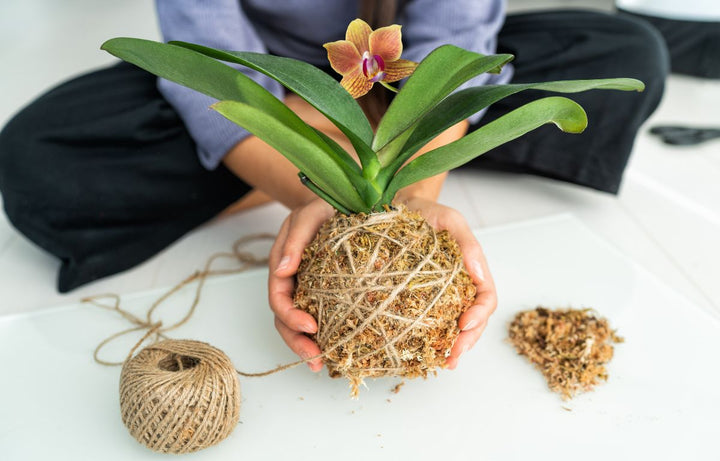
A Guide to Creating and Caring for Living Moss Balls
A Guide to Creating and Caring for Living Moss Balls
In the world of botanical art and Japanese gardening, Kokedama is a captivating and unique craft that combines nature and creativity. These enchanting "moss balls" serve not only as stunning decorative pieces but also as living, breathing plants.
Origins and History of Kokedama
Kokedama, which translates to "moss ball" in Japanese, has its roots in the traditional Japanese art of bonsai. Developed during the Edo period (1603-1868), Kokedama emerged as a way to display smaller, potted plants in a more natural and aesthetically pleasing manner. Over time, it evolved into an art form in its own right.
Originally, Kokedama was reserved for showcasing bonsai and other carefully cultivated plants. Today, it has expanded to encompass a wide variety of plant species, making it accessible to plant enthusiasts worldwide.

Creating Your Own Kokedama
Materials you'll need:
Plant: Choose a suitable plant. (More on this later)
Sphagnum moss: For wrapping and covering the roots.
Bonsai or peat soil mix: To create a growing medium.
Twine or string: For binding the moss ball.
Watering can or spray bottle: To keep your Kokedama hydrated.
A bowl or plastic sheet: To work on and contain mess.
Steps to Create a Kokedama
Prepare the plant: Gently remove excess soil from the plant's root system, leaving a small amount to help the plant establish itself.
Create a soil mixture: Combine the bonsai or peat soil mix with water until it holds together without being too wet.
Wrap the roots: Encase the plant's roots with a layer of moistened sphagnum moss.
Form the moss ball: Carefully form a ball around the moss-covered root system.
Bind the moss ball: Use twine or string to secure the moss in place, creating a neat, compact sphere.
Trim excess twine: Trim any excess twine, leaving a loop for hanging if desired.
Water thoroughly: Soak your Kokedama in water until it's well-saturated.
Hang or display: Allow it to drip dry, then choose a suitable location for display.
Suitable Plants for Kokedama
Not all plants are well-suited for Kokedama, as they should be able to thrive in a root-bound environment. Some popular choices include:
Ferns: Maidenhair ferns and Boston ferns work beautifully.
Succulents: Such as Echeveria or Sedum varieties.
Ivy: English ivy or Pothos make great hanging Kokedama.
Orchids: Especially miniature varieties like Phalaenopsis.
Herbs: Like basil, mint, or oregano for functional Kokedama.

Caring for Your Kokedama
Kokedama care requires attention to detail but is immensely rewarding.
Light: Place your Kokedama in indirect or filtered sunlight. Avoid direct sunlight, as it can scorch the moss.
Watering: Dip your Kokedama into a bowl of water for a few minutes or use a spray bottle to thoroughly moisten the moss when it feels dry to the touch. Be careful not to overwater; root rot is a common issue.
Pruning: Trim away any yellowing or dead leaves to encourage healthy growth.
Fertilising: Feed your Kokedama with a diluted liquid fertiliser during the growing season (spring and summer) every 4-6 weeks.
Repotting: As the plant grows, you may need to rewrap or repot it. This is an excellent opportunity to refresh the moss and soil mixture.
Common Problems and Solutions
Overwatering: If you notice moss turning green or a foul smell, your Kokedama is likely overwatered. Allow it to dry out and adjust your watering routine.
Drying Out: If the moss ball becomes too dry and hard, soak it in water to rehydrate it.
Yellowing Leaves: This can be a sign of either overwatering or underwatering. Adjust your watering accordingly.
Pests: Occasionally, pests like aphids or mealybugs may appear. Treat them with a gentle, natural insecticide or need oil.
Kokedama is a beautiful fusion of art and gardening that brings the beauty of nature into your living space. With patience and care, you can create these enchanting living moss balls and enjoy the serenity and vitality they bring.
Keen to keep reading? Check out this blog on rare philodendrons!
